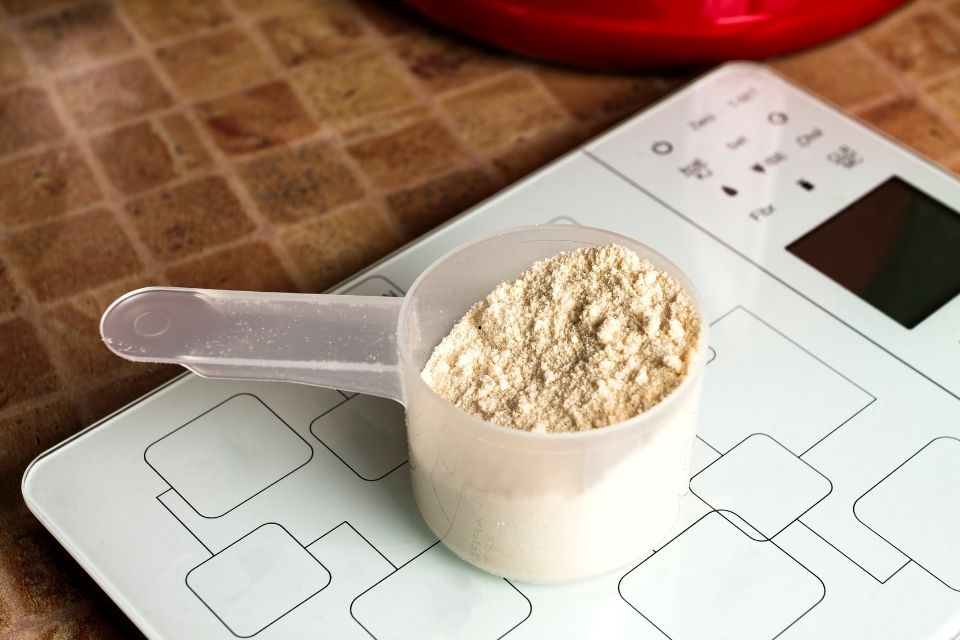If you’ve started training with the goal of gaining muscle, you’ve probably heard the term bulking. But what does bulking actually mean, and why do so many people follow this strategy?
In this article, we’ll explain exactly what bulking is, how it works, the different types of bulking, and the key steps to do it effectively without compromising your health.
What is bulking?
Bulking is a muscle-building strategy that involves eating more calories than your body burns to promote muscle growth. This phase is typically combined with consistent strength training.
With a calorie surplus, the body has enough fuel to build new muscle tissue, as long as your workouts and nutrient intake are well planned.
Types of bulking
There are two main types of bulking: clean bulking and dirty bulking. The choice between them depends on your goals, level of discipline, and lifestyle.
Clean bulking
Clean bulking focuses on increasing calorie intake while still choosing nutritious, whole foods. The goal is to eat more without overloading on junk food.
This approach is slower, but it helps minimize fat gain and makes the cutting phase (fat loss) easier later on.
Dirty bulking
Dirty bulking involves eating as much as possible, regardless of food quality. This often includes fast food, sweets, and highly processed meals.
While it leads to faster weight gain, a significant portion of that is fat, which may impact aesthetics and make the cutting phase more challenging.
How to do bulking the right way
For effective bulking, it’s essential to follow a smart, balanced strategy. Here are the most important elements:
Controlled calorie surplus
You need to eat more than you burn, but gradually. A surplus of 250 to 500 calories per day is typically enough to promote muscle growth while minimizing fat gain.
Macronutrient balance
Your diet should include a good balance of carbohydrates, protein, and healthy fats. Protein is especially important for muscle repair and growth, while carbs provide energy for training.
Intense strength training
Bulking must be paired with a proper workout plan focused on progressive overload. Without adequate training, the extra calories may turn into fat instead of muscle.
Professional guidance
Working with a nutritionist can help you make adjustments along the way and get better results safely and efficiently.
Examples of clean bulking foods
- Brown rice, sweet potatoes, whole-grain pasta
- Eggs, chicken, lean beef, fish
- Nuts and seeds like almonds and cashews
- Fruits, vegetables, avocado, olive oil
- Natural yogurt and low-fat cheese
How long does the bulking phase last?
Bulking can last anywhere from 2 to 6 months, depending on your experience, goals, and progress. Athletes with advanced objectives may bulk for longer periods.
It’s important to monitor results and know when it’s time to transition into cutting, the fat-loss phase.
FAQ
Is bulking only for men?
Not at all. Women can also benefit from bulking, especially if their goal is to build lean mass and improve strength and performance.
Can I build muscle without bulking?
Yes, but the process is slower. Bulking speeds things up by creating ideal conditions for muscle growth.
Do I need supplements to bulk?
Not necessarily. Supplements like whey protein or mass gainers can be helpful but aren’t required if you meet your nutritional needs through whole foods.
Will I gain fat during bulking?
Yes, some fat gain is expected—even during clean bulking. The goal is to manage that gain so cutting later is easier and more effective.
Personalized workouts in the palm of your hand!
Bulking is a powerful strategy to gain muscle, as long as it’s done with intention, consistency, and proper support.
More food doesn’t mean worse choices. Quality nutrition, structured training, and a well-planned cutting phase are all key to successful, long-lasting results.
Want a training and meal plan tailored to your muscle-building goals? Download the Befit app now and access customized routines designed by professionals to help you reach your full potential.








